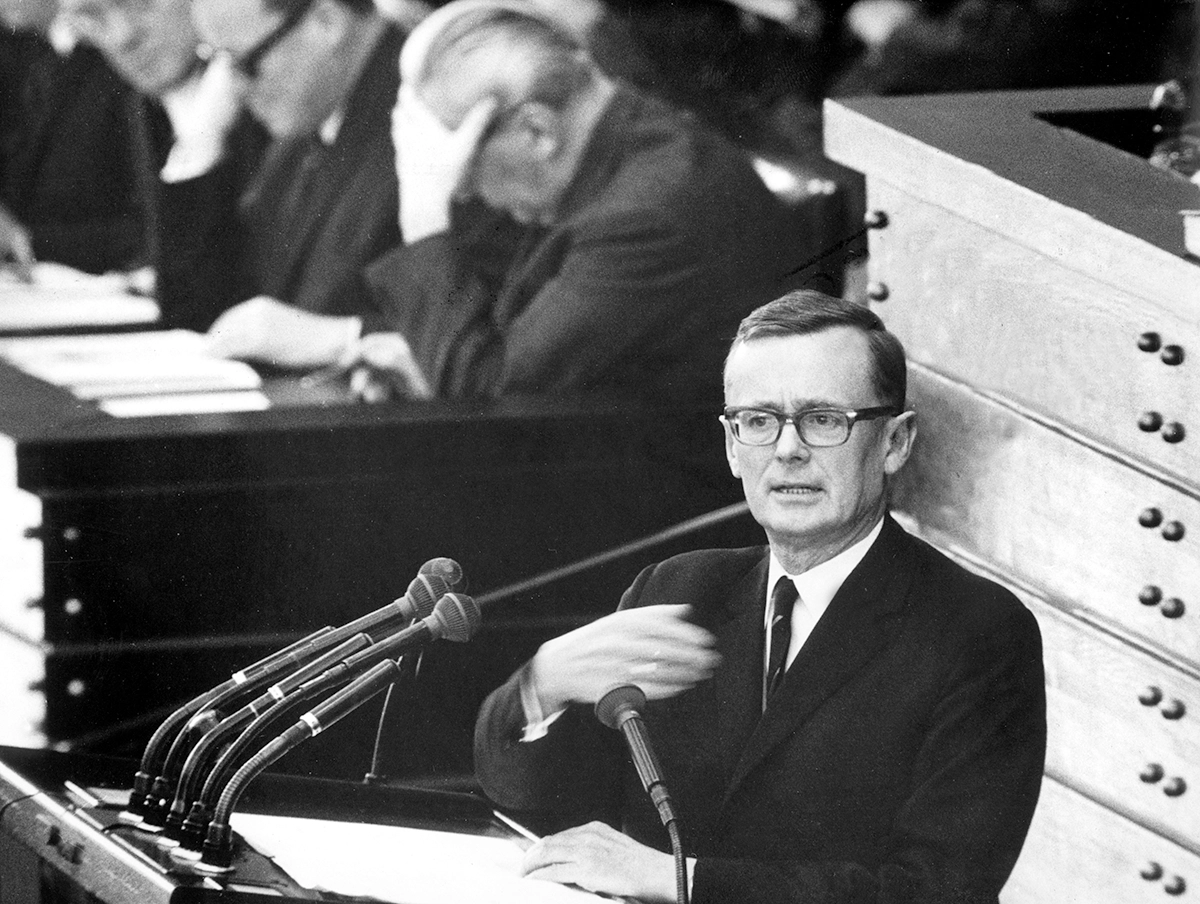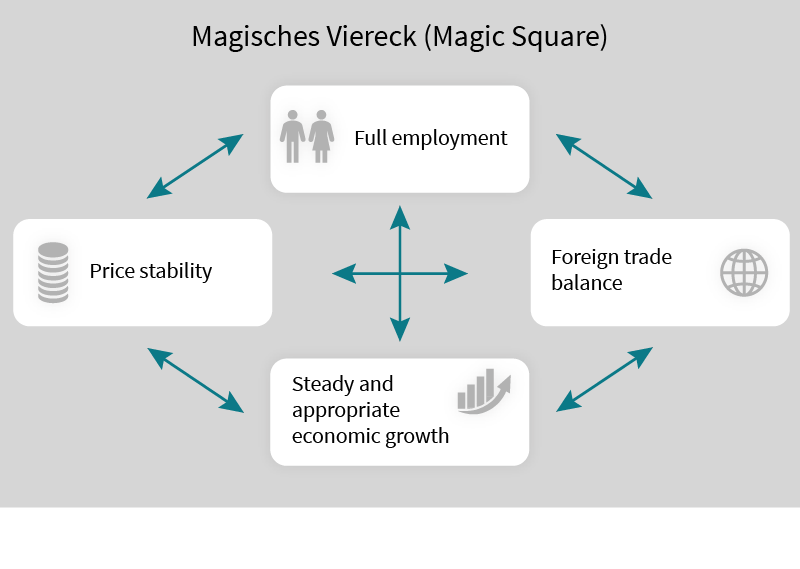After the prosperous years of Germany’s “economic miracle,” the first clear signs of a recession emerged. In response, on May 10, 1967, the German Bundestag passed the “Act to Promote Stability and Growth in the Economy” by a substantial majority. The Federal Government aimed to achieve four major objectives: full employment, price stability, external economic balance, and economic growth – collectively known as the “magic square.” The ifo Institute has consistently supported these measures with up-to-date data.


Germany’s First Economic Crisis
Between the fall of 1966 and the summer of 1967, the Federal Republic of Germany faced its first significant economic downturn. The unemployment rate increased from 0.7 to 2.1 percent. Prices rose, while wages barely moved. The budget situation became precarious, making subsidy cuts and social policy reductions seem inevitable. Political disagreements over the federal budget culminated in the dissolution of the Christian-Liberal government under Chancellor Ludwig Erhard in October 1966. Following Erhard’s resignation on November 30, a grand coalition of the CDU/CSU and SPD took over government responsibilities for the first time on December 1, 1966.
New Government, New Economic Policies
Chancellor Kurt Georg Kiesinger (CDU) announced an expansionary and stability-oriented economic policy in his government declaration on December 13, 1966. The economic crisis was to be countered with stimulus programs and the newly introduced Stability Act. The new Federal Minister of Economics, Karl Schiller (SPD), advocated for an “enlightened market economy” – mix of competitive markets and state oversight, contrasting sharply with Ludwig Erhard’s preference for a free market economy with minimal state intervention. The Bundestag set the stage for the first economic stimulus package on February 23, 1967, with the Credit Financing Act, which authorized 2.5 billion Deutsche Mark, with 850 million Deutsche Mark earmarked for immediate measures including investments in federal railways, postal services, and road construction. Legal authorization was required for the necessary loans. Federal Finance Minister Franz Josef Strauss (CSU) had introduced the necessary Credit Financing Law. At the same time, the Bundesbank lowered key interest rates.


Ongoing Evaluation by the ifo Institute
Just a day after the Bundestag passed the Credit Financing Act, the ifo Institute summarized the situation in its ifo Schnelldienst publication on February 24, 1967: “The economic stimulus measures adopted by the Federal Government and the effects on the capital market from the reduction in the bank rate and the minimum reserve rates suggest that investment activity will pick up this year.” Data from the ifo Business Survey, the GfK consumer survey, and the Federal Statistical Office collected on March 17, 1967, indicated it was too early to declare a definitive shift in economic sentiment. Even the lecture by ifo board member Herbert Hahn printed in the Schnelldienst of June 19, 1967 merely explains “The current economic problems.” Only towards the end of 1967 did economic prospects start to improve as policymakers had hoped. The ifo Schnelldienst reported a strong increase in demand for capital goods in November, with the business climate in the manufacturing industry finally being assessed as predominantly positive by year’s end.
“A Table on Four Legs”
The Stability Act mandates that the federal government must present an annual economic report as a foundation for its actions, and every two years, a subsidy report must be published to disclose the development of financial aids and tax concessions. Economics Minister Schiller described the law as transitioning from a conventional to an enlightened market economy, likening it to a stable table standing firmly on four legs, grounded in rational insight and cooperation.


A Law with Lasting Impact
Unlike earlier proposals from the black-yellow coalition, the new federal government – and all that followed – were to pursue not only sound fiscal policies but also cyclically sensitive economic strategies. If circumstances required it, the federal cabinet would have the legal means to burden or relieve the economy with government measures, depending on the economic conditions. By the end of the 1969 legislative period, unemployment had fallen to 0.9 percent, and by 1970, it reached a low of 0.7 percent, nearing full employment. However, the 1973 oil crisis tested the limits of state economic control, leading to a surge in public debt and necessitating a reevaluation of the economic stabilization reserve. Since the Stability and Growth Act came into force, there have been heated debates about when and in what form the government should introduce measures to steer the economy. Despite varied opinions across political parties, the Stability and Growth Act remains in effect, a testament to its enduring relevance in guiding Germany’s economic policy.